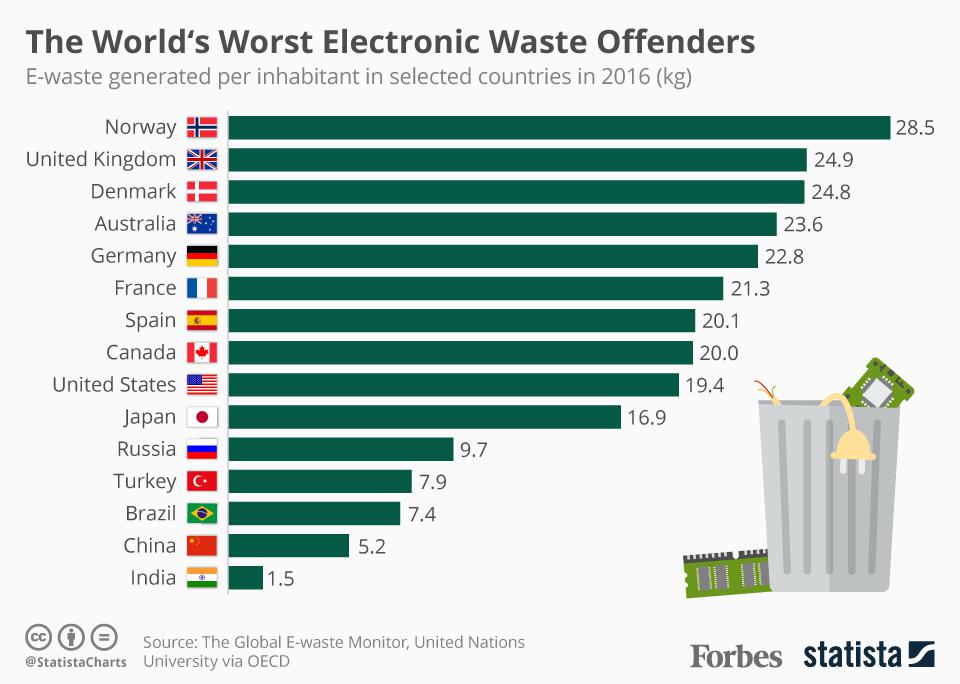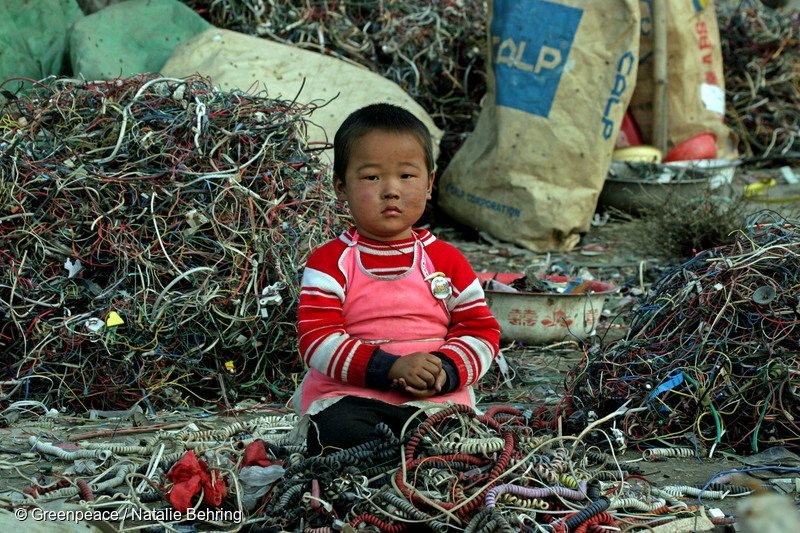When you buy a new phone, a new fridge, or replace a broken monitor, what happens to the old one?
With so many electronics around today, we need to think seriously about ‘e-waste’. This type of waste includes all discarded appliances. For example, mobile phones, laptops, tablets, televisions, and even ovens and fridges.
That’s because e-waste is one of the fastest-growing waste streams on the planet. We make about 50 million tonnes of the stuff every year. By 2030, that number will likely hit 70 million. These products are basically unsustainable. They’re putting pressure on Earth’s limited resources.

So Why do we Produce so much E-Waste?
As prices come down, we are buying more devices. On top of that, new devices date more quickly. A shorter lifespan and cheaper prices is creating huge volumes of e-waste.

Why Do We Need E-waste Management?
E-waste, without proper treatment, harms the environment and human health. Dumping it in landfill pollutes the soil, air and water. It leaks large amounts of heavy metals like lead and mercury.
However, it also contains valuable metals like copper and gold. Unfortunately, many countries use informal or ‘backyard’ recycling to reclaim it. Here, untrained workers shred, burn, and dismantle devices by hand.
In addition, open-air burning releases toxins into the air. So, informal recycling exposes workers and nearby residents to risk of serious disease.
Instead, proper e-waste control manages the whole life cycle of a device. That means, firstly, building eco-friendly products, and then safely recycling their elements. It also means limiting pollution. As a result, we create a safer and more sustainable industry.

4 Top Methods for E-waste Management
So, cutting e-waste means smart design, proper recovery, and safe disposal. It means not sending discarded devices to poorer countries for recycling, and making people aware of its impacts.
As a result, there are several approaches that have proven effective around the world. Experts recommend that we employ at least two of the following:
Life Cycle Assessment (LCA)
LCA helps design new eco-friendly devices. Better design means less e-waste. Germany, Japan, Korea, India, and the UK are using this tool.
Material Flow Analysis (MFA)
MFA is a method of analysis. It helps plot the route of e-waste to disposal sites. Countries that use MFA include China, India and South Africa.
Multi Criteria Analysis (MCA)
Similarly, MCA assesses trade-offs between different waste disposal solutions. So, it is helpful with solving complex problems. Right now MCA is mostly used in managing regular solid waste.
Extended Producer Responsibility (EPR)
EPR uses the polluter-pays principle. It puts the onus back on to manufacturers. Switzerland, Japan, and parts of the United States and Canada are taking the lead with this approach.
E-Waste Management Around the World
So, countries are creating their own e-waste disposal policies. However, the efficacy of each response varies greatly. Much depends on their economic and social conditions. Also, the sources of e-waste and the amounts produced play a part. Moreover, the degree of public awareness is key.
Australia
In Australia, Extended Producer Responsibility (EPR) led to the Product Stewardship Act (2011). The Act included three different levels of responsibility: voluntary, co-regulatory, and mandatory.
However, this Act doesn’t apply directly to e-waste. Even so, the country has since created binding e-waste recycling targets. These fall under the National Television and Computer Recycling Scheme (NTCRS).
India
By comparison, India’s rules for e-waste control are weak. This is despite the fact that India is the 5th largest e-waste producer in the world.
Currently, India’s e-waste management is mostly informal. The lack of control creates serious environmental and health concerns.
However, revisions to the law have at least created some rules for waste disposal. Though, even these are not mandatory.
Japan
Japan throws out about 650,000 tonnes of electronics every year. Even so, it is one of the first countries to install a formal e-waste program. Unfortunately, this covers less than a sixth of its output. In practice, Japan is guided by two laws: The Law for the Promotion of Effective Utilisation of Resources (LPUR), and the Law for the Recycling of Specified Kinds of Home Appliances (LRHA).
USA
Globally, the USA is a major producer of e-waste. However, regulation is poor. Landfill is still the main method of disposal. Even so, some awareness of the need for regulation is building.
Nepal
Likewise, most e-waste in Nepal is dumped in landfill. At present there are no laws for handling e-waste. However, new Hazardous Waste Regulation is being drafted. As a result, its management should improve. There will also be bans on the illegal import of electronics.
Qatar
By 2026, Qatar’s e-waste will grow to 45,708 tons. Currently, the country does have some e-waste and battery facilities, but most of it is exported.
Zimbabwe
In Zimbabwe, e-waste isn’t a big issue yet. However, companies and pressure groups are warning of the potential hazards.
Nigeria
Equally, Nigeria doesn’t have formal e-waste facilities either. Here, backyard recycling is common.
Even so, the Nigerian government passed National Environmental Regulation in 2011. This Act banned the import of e-waste and set rules for control.
Ghana
There are currently no laws for e-waste recycling in Ghana. Still, the government has tried to raise public awareness. At present, most recycling remains informal.
How Can We Reduce our Electronic Waste?
Firstly, e-waste management is a collaborative, multi-sector task. That means that good public policies are vital.
Also, eco-friendly designs and rules for disposal help cut e-waste at the source.
In addition, stores can provide discounts for returning old products. They can even provide a pick up service too. Moreover, governments can assist by giving subsidies for this kind of service.
Care and Repair
Right now, limiting purchases remains the most valuable thing we can do.
So, we must re-evaluate before buying those extra gadgets. Also, we must take care of our e-devices, and make them last.
Finally, one of the best tools we have is research. You can find out more about e-waste and reducing consumption at the THRIVE Project. THRIVE is a not-for-profit group that provides useful information on sustainability to consumers and business. Support THRIVE and join us on our mission to promote ‘Thrivability’ and a better world.




















